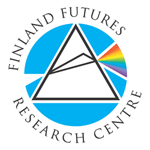Patrick Nathan, Deputy Director, National Security Coordination Centre, Prime Minister’s Office
Jeanette Kwek, Senior Strategist, Strategic Policy Office, Public Service Division, Prime Minister’s Office
Bernard Toh, Strategist, Strategic Policy Office, Public Service Division, Prime Minister’s Office
Q. The interview focused on methodology. The experts were asked to elaborate on the Singapore’s method to handle WI-WEs, and how to carry out practical risk assessment and relevant horizons scanning.
Answers:
For the Risk Assessment and Horizon Scanning (RAHS) program in Singapore, there are two main strategic foresight efforts:
(1) RAHS employs directly 8 people in mainly performing daily horizon scanning and 14 people in technology and software development. RAHS staff analyse approximately 150 globally detected issues everyday, which are related to 18 key domains of interest. That information is produced into daily reports and bi-monthly analysis reports, and will be finally synthesized into an annual product which could serve as an input to strategic planning. There are a range of sources, from dedicated environmental scanning services such as Shaping Tomorrow, to futurist networks, futurist blogs, scanning sites and news aggregators.
The RAHS suite of tools 1.0 was piloted in 2007. RAHS 1.0 is currently in use, and in the end of 2010 the RAHS 2.0 will be launched. The tools will be used to help analyze trends from the daily scanning efforts.
(2) The RAHS team is working with other government agencies such as the Strategic Policy Office on a Singapore Emerging Strategic Issues Project (SESIP in this interview report). The Global Business Network / Monitor 360 were consultants in the first phase of the project. SESIP had about 10 people from different ministries working on the project and its objectives are both to identify significant emerging issues to produce new strategic intelligence, and to make tangible strategic impact on decision making. There are varied information sources for SESIP including on-line consultations and workshops with domain experts from a number of countries and with different backgrounds.
(a) The first phase (six months) of SESIP has been completed, and the second phase has commenced. In the first phase, the process started with gathering 400 very versatile ideas of emerging issues for further analysis. These ideas were then clustered according to STEEPM categories (M- for military). The clustered ideas were then ranked according to seven criteria. The result was 50 emerging issues. These 50 issues will be translated into indicators so that they can be tracked in the RAHS system.
(b) In the second phase (six months), there are a number of separate tracks. One key effort would be to re-cluster and identify cross-cutting challenges. Inspiration has been drawn from the work done by the European Commission’s Joint Research Commission to identify key emerging issues in their EU and the State of the World in 2025 study. The intention is to distill the 50 issues into a smaller and more manageable list of 15-20 uncertainties and risks that could be discussed by key policy-makers and decision-makers.
The first phase resulting in the 50 emerging issues has already led to some useful follow-on work. Some of the ministries in Singapore have started to analyze the 50 issues for specific impact and influence on their domains of interest.
